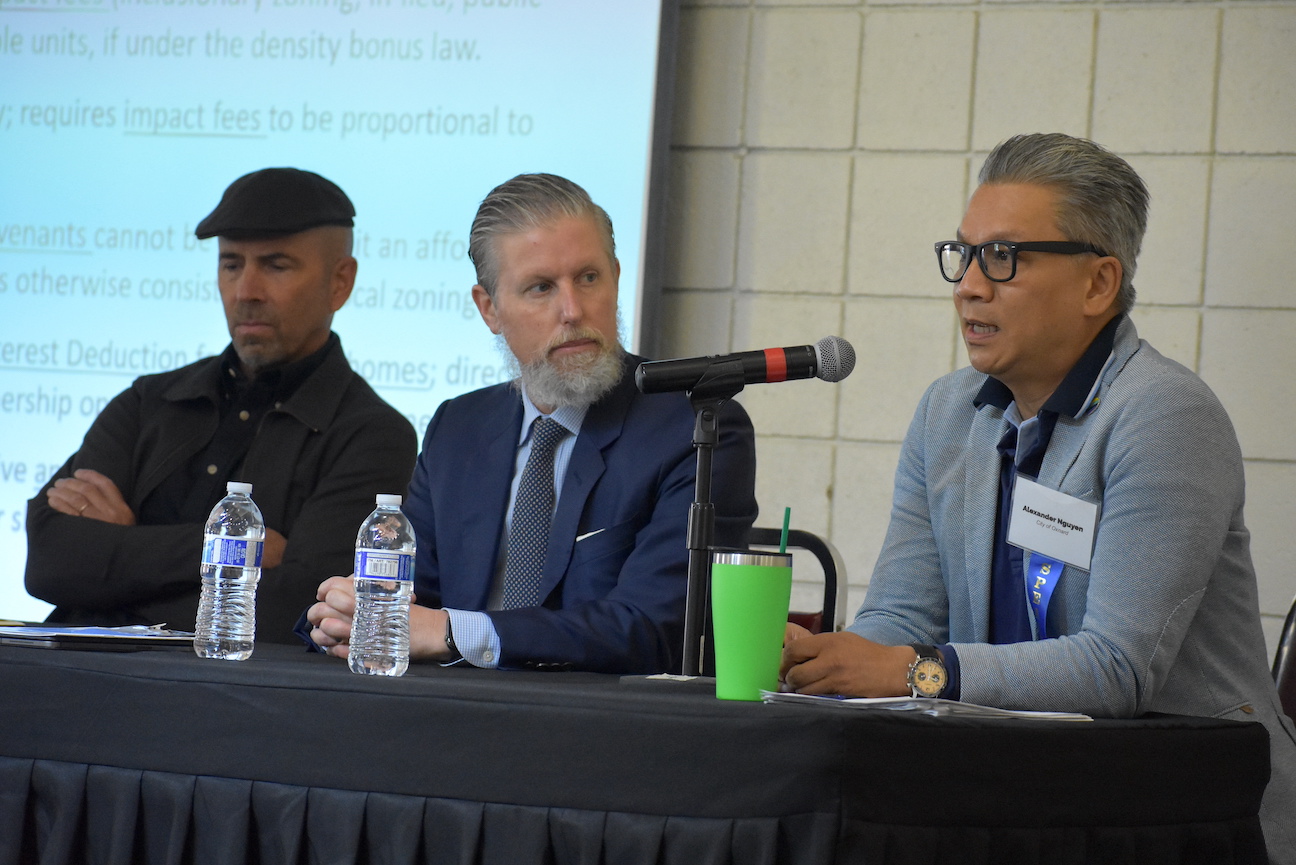Ventura County leaders discuss housing shortages at conference in Oxnard
IN THIS ARTICLE
- East Ventura County Topic
- pacbiztimes Author
By pacbiztimes Thursday, October 14th, 2021

In 2021, California lawmakers in Sacramento passed at least 35 measures to address the housing crisis in the state.
Local municipalities across California are dealing with a flurry of new housing-related laws and measures that could reshape the state’s housing landscape, and shift the balance of power on housing regulations away from cities and counties and toward Sacramento. This “state versus local” dynamic was the subject of a panel discussion during the 20th annual Ventura County Housing Conference, hosted in Oxnard by Housing Opportunities Made Easier on Oct. 13.
More than half of the cities in the state have produced no affordable housing units in recent years, Oxnard City Manager Alexander Nguyen said during the panel discussion.
“The state has a lot of funding, but the funding mechanism for affordable housing is like, you have to be a contortionist to get a project to happen these days,” Nguyen said. “The whole affordable housing regime in California is turning into a fetish that produces no pleasure.”
Nguyen suggested making state funding more directly available and provided to cities based on performance.
“We’re not competitive enough to go after grants and win grants where the criteria are for transit, because we don’t have it,” Nguyen said.
Nguyen was on the panel, along with Jeff Mitchem, the community and economic development manager for the city of Santa Paula, and Thousand Oaks City Manager Andrew Powers.
The panel discussion was moderated by Carl Morehouse, a former Ventura County planner and Ventura City Council member.
The demand for housing does not arise from building more housing, Morehouse said — it’s because of job creation.
“Where there are jobs, there’s a demand for housing,” he said.
Senate Bill 10 and Senate Bill 9, two new California laws encouraging the creation of additional housing, are causing “a lot of angst to local jurisdictions,” Morehouse said.
In Oxnard, there are “real fears and concerns” about overcrowding, Nguyen said. The city “has been very good over the years in terms of creating housing,” he said. “Our challenge is land and culture.”
Looking forward, “it’s going to come down to project by project, and neighborhood by neighborhood,” he said.
Oxnard is about 25 square miles, and Nguyen said the availability of land is a real constraint on housing development.
“We have 210,000 people on 18 square miles,” Nguyen said. “Nobody wants to go up. That’s a problem, and it’s overcrowded in many of our neighborhoods.”
Nguyen said when he proposes a seven-story building in the downtown area, he’s “accused of putting a seven-story high-rise.”
In the city of Thousand Oaks, the “focus is control what we can control,” Powers said. Powers said he thinks Ventura County and Thousand Oaks are “incredibly well poised in this moment.”
“In Thousand Oaks, we talk a lot about the balance between jobs, housing and environment,” Powers said. “You can extrapolate that out to broader Ventura County, and recognize we’ve done an amazing job in the environment.”
Powers said the area is doing an “increasingly good job on the jobs front,” mentioning investments in the agriculture and banking industries, as well as the high-tech industry with companies like The Trade Desk and many biotechnology firms.
“The housing front has been an area that’s lagging,” Powers said.
From first-time homebuyers struggling with the markets, to tackling the homelessness crisis, there are challenges across the spectrum, Powers said. However, he’s optimistic “about where we are,” and planning on the local level is where solutions start.
“There’s a lot of ways Sacramento challenges are being put on us,” Powers said. “The best way for us to focus on good quality is to plan.”
In Thousand Oaks, the city is updating its policy document that guides visions and goals within the community. Under California law, every city is required to have a general plan and plan for its share of regional housing demand.
While most cities update their plans every 10-15 years, the last comprehensive general plan update in Thousand Oaks was completed in 1970, according to Powers. Updating the general plan is a “huge undertaking,” he said.
Members of the Thousand Oaks City Council wrestled with changes to the general plan’s land-use map, and they centered the city’s future housing investments along the Highway 101 corridor “in areas that are ripe for change,” Powers said.
“Like most cities in Southern California, we’re overbuilt in retail and commercial setting, and now in the office,” Powers said. “Those are going to be areas in every one of our cities that are going to change.”
Mitchem asked the more than 60 masked attendees to raise their hands if they would like their housing to be more affordable. The crowd inside the Oxnard Performing Arts Center laughed and nearly everyone raised their hands.
“We’re all preaching to the choir,” Mitchem said.










